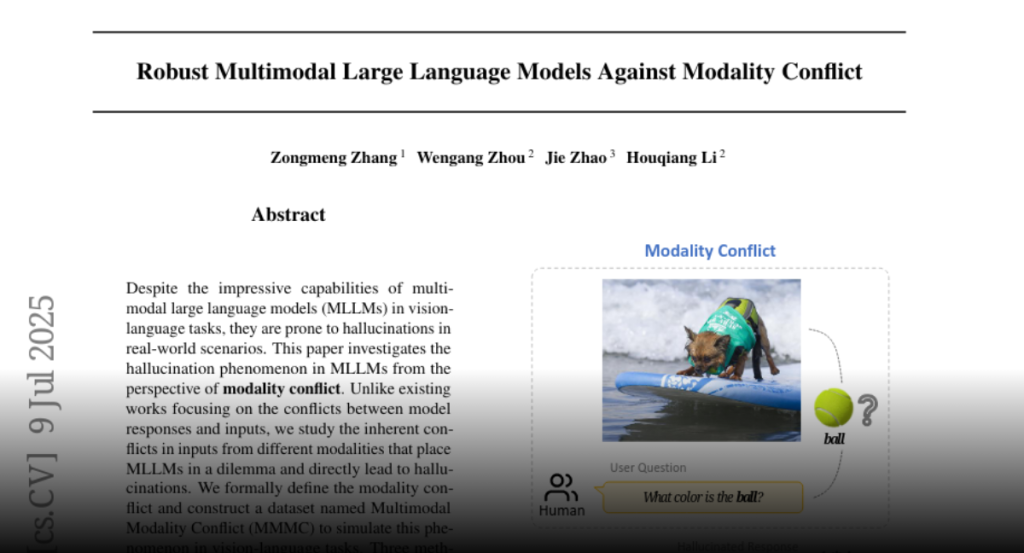Investigation of modality conflict in multimodal large language models reveals its role in causing hallucinations, with reinforcement learning emerging as the most effective mitigation strategy.
Despite the impressive capabilities of multimodal large language models
(MLLMs) in vision-language tasks, they are prone to hallucinations in
real-world scenarios. This paper investigates the hallucination phenomenon in
MLLMs from the perspective of modality conflict. Unlike existing works focusing
on the conflicts between model responses and inputs, we study the inherent
conflicts in inputs from different modalities that place MLLMs in a dilemma and
directly lead to hallucinations. We formally define the modality conflict and
construct a dataset named Multimodal Modality Conflict (MMMC) to simulate this
phenomenon in vision-language tasks. Three methods based on prompt engineering,
supervised fine-tuning, and reinforcement learning are proposed to alleviate
the hallucination caused by modality conflict. Extensive experiments are
conducted on the MMMC dataset to analyze the merits and demerits of these
methods. Our results show that the reinforcement learning method achieves the
best performance in mitigating the hallucination under modality conflict, while
the supervised fine-tuning method shows promising and stable performance. Our
work sheds light on the unnoticed modality conflict that leads to
hallucinations and provides more insights into the robustness of MLLMs.

